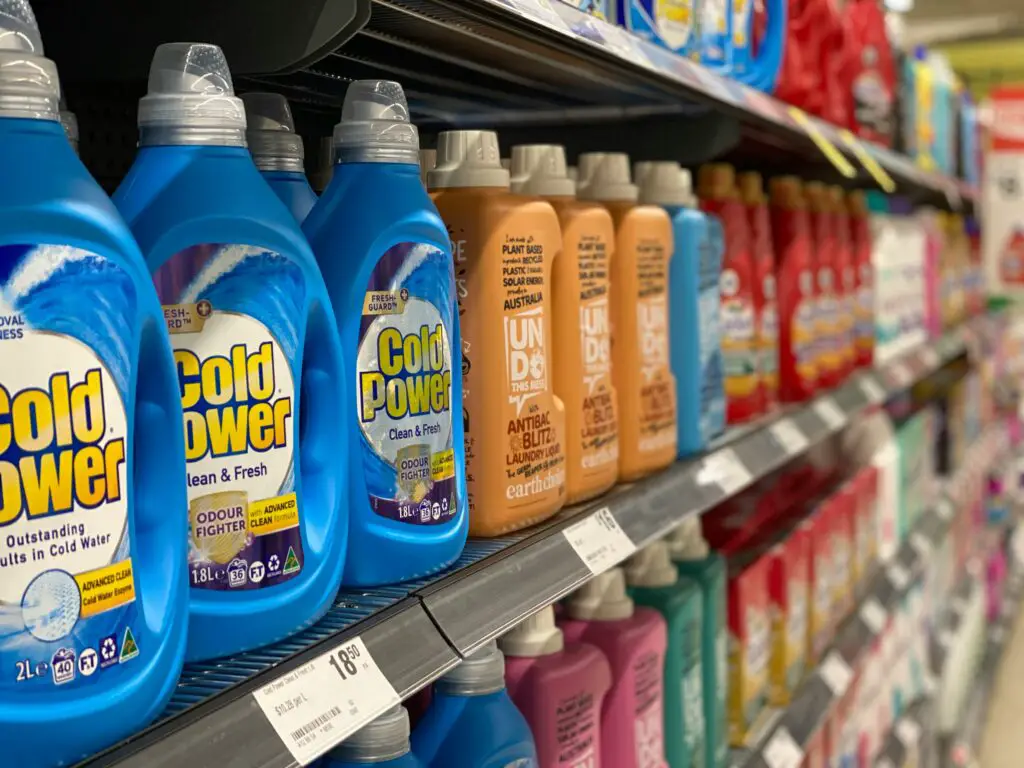Related Posts
In a recent viral video, a new trend has sparked a heated debate over the concept of “Shrinkflation” – a term that refers to reducing a product’s size while maintaining its original price. This trend showcases shoppers filling up Tide detergent containers to the brim, an act that Attorney Ugo Lord has called into question.
Ugo Lord’s Verdict: It’s Theft
Ugo Lord, the man who’s been offering legal advice to his followers on TikTok, doesn’t hesitate to refer to the act as a “legal concept known as THEFT.” It’s an unambiguous callout, a stark reminder for his viewers and anyone else engaging in this trend that they’re crossing a line from consumer activism into illegal territory.
He talks about shrinkflation and notes that the consumers are paying for the particular ounces stated on the package, not for the physical container.
It’s not a question of the container’s capacity but about the quantity of product for the price. By adding more ounces than you’ve paid for, you’re essentially stealing from the company.
In other words, the actual theft occurs when you manipulate the quantity of the product without adjusting the price. The Tide container serves as a physical vessel for a specified quantity of detergent, and by filling it up to the brim with more detergent than specified, consumers are essentially taking more than they have paid for.
Eventually, Attorney Lord confidently concludes that “it makes these shoppers guilty of petty theft.”
Shrinkflation: A Stealthy Profit Boosting Strategy
Shrinkflation is a subtle but impactful business practice predominantly found in the food and beverage industries. It is essentially a sleight of hand in which companies strategically reduce the volume, weight, or quantity of a product while artfully maintaining the original price. This strategy enables companies to counteract the impact of rising production costs on their profit margins.
At the heart of shrinkflation lies a simple business dilemma – the constant struggle to balance input costs and profit margins. When key inputs such as raw materials or labor rise in valuation, the cost to manufacture final goods escalates. This subsequently exerts downward pressure on profit margins – the percentage of revenue remaining after all costs.
Faced with this predicament, companies have two choices – raise prices and risk alienating consumers or find other ways to recoup the losses. Shrinkflation offers a third option, a middle ground that allows them to maintain a healthy profit without jeopardizing sales volumes. By reducing the weight, volume, or quantity of products, they manage to boost profitability while keeping their prices competitive.
Petty Theft: The Legal Perspective

Petty theft, also known as petty larceny, is a term used in legal circles to categorize thefts where the value of the stolen property is relatively low. The definition and the penal consequences of petty theft vary from state to state, but the common thread is that it is treated as a misdemeanor, a lesser criminal act.
In many jurisdictions, the value of the stolen property is the determining factor for classifying a theft as petty or grand. In Oklahoma, for instance, petty larceny is a theft where the value of the stolen property is $1,000 or less. Meanwhile, under the California penal code 484(a), it is a crime to take and carry away the property of another valued at $950 or under with the intent to permanently deprive the owner of it.
To fully understand the legal implications of petty theft, it’s important to break down the elements that constitute this crime. The prosecutor, the lawyer who represents the government in criminal cases, has the burden of proving each element beyond a reasonable doubt for a conviction on petty theft charges:
- Taking possession of property owned by someone else.
- Taking the property without the owner’s consent.
- Harboring the intent to permanently deprive or remove the property for an extended period of time, thus depriving the owner of a major portion of its value or enjoyment.
Given this legal perspective, filling detergent containers beyond their stated volume can indeed be classified as petty theft.
A Trending Reminder
While this trend of filling detergent containers might seem insignificant in isolation, the financial ramifications for companies can be substantial on a large scale. This, in turn, can lead to an increase in prices for all consumers, thus defeating the act’s original intent.
Hence, it’s not just a legal issue but also an ethical one, making it important for consumers to think twice before engaging in such trends.


People buy based on perceived value. They see the container size and make the buying decision on that. It would only be fair if the container was clear so people can make a fair choice.
So the manufacturer is in effect stealing from the consumer.